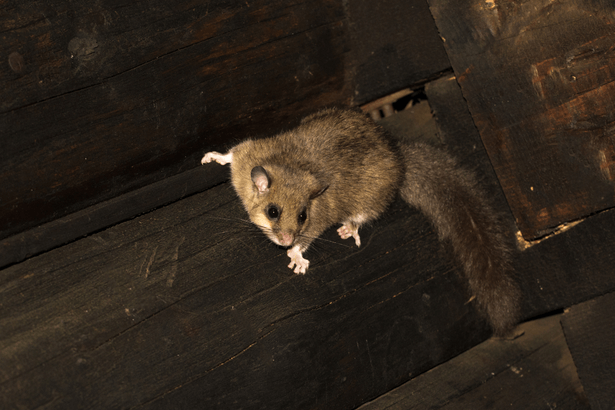A dormouse? Have you seen a dormouse? A curious and somewhat shy little animal, the dormouse is not only cute with its big round eyes. This small mammal with a bushy tail is actually intelligent enough to come and shelter in unfrequented interiors to spend the winter, because it fears extreme cold.
Don’t mix cabbages and carrotsa dormouse is not a garden dormouse. That being said, it must be said that a dormouse can quite easily adapt to the living spaces of a garden dormouse… With a few differences!
General information on the dormouse, a nocturnal animal that is sometimes invasive
A dormouse (Glis glis) is the largest representative of the family of Gliridae to which it belongs. Measuring up to 37 cm including the tail and weighing between 80 and 200 g, it can be found up to 2,000 m above sea level.
It generally lives in a territory of about 150 m in diameter, but can however disperse (go and settle elsewhere) one kilometer from its birthplace. Present practically everywhere in Europe and therefore in France, the dormouse is much more fond of deciduous forests than those of conifers. A member of our ordinary biodiversity, it is also found in our gardensin the city parks of all sizes, in the orchards extensive or even in the groves preserved.
Agile as a squirrel, a dormouse moves by climbing and jumping, walking very little on the ground!
After the mating period which runs from June to August, a relatively long gestation period of more than 30 days follows. The female then gives birth from 2 to 9 young that she will breastfeed for no less than 7 weeks.
The grey dormouse can live for around ten years, if it does not cross paths with one of its predators: the cat, the beech marten, the pine marten, the owl or the owl!
Particularities of the dormouse
What does the dormouse eat? Hazelnuts, chestnuts, acorns, soft bark, mushrooms, fruits and even buds constitute the basic diet of this little one. omnivorous rodent : a varied diet that allows it to store fat to better hibernate from October to March-April. During this period, as the saying goes, it will essentially “sleep like a log” and eat very little!
What does the dormouse eat? Not much during hibernation! © COULANGES
Read also: How does winter go for hibernating animals?
Building a nest of moss and plant fibers of all kinds in an old tree, in a rocky cavity or any place high up, the dormouse will fall asleep to spend the bad season.
Animal nocturne Built to move in the dark, the dormouse is particularly fond of taking refuge in our attic et attics where it is not too disturbed. It is often in these cases that we discover better the functioning of an animal which can make enough noise for us to have the idea of using a dormouse repellent to avoid this inconvenience.
Protected status of the species
The dormouse is listed as “least concern” by the International Union for Conservation of Nature (IUCN) but is still “vulnerable” in the Centre region.
Threats to the dormouse
A dormouse has no great fear of humans, as proof its ability to invite itself into our homesespecially those that are not very busy, such as second homes. Its voluntary destructioneven if it is strictly forbidden, can however locally have consequences in places where, culturally, it is systematically thrown out.
But what most threatens the dormouse, like a huge part of wild fauna, is loss of habitat. A dormouse needs an interconnected habitat, not just small patches of nature that are too far apart. A dormouse needs deciduous forests of a good size, not copses that are too small. Finally, a dormouse needs rich landscapes, not agricultural plots that are too large for it to even cross.

You have a dormouse in your attic! © Geza Farkas
How to help the dormouse
A dormouse has this particularity that it knows how to take advantage of our presence and that, at the same time, it is relatively close to us. This means that, whether you like it or not, A dormouse can invite itself into your home overnight.
This will be the moment whenYou will have to be patient and find lasting solutions to live with him. or find another place for it to live (at the right time because moving a dormouse during hibernation is likely to kill it).
Not using any lethal means to “get rid of” it can be a challenge for any wildlife lover, as dealing with a particularly noisy dormouse is not easy!
Article updated
consoGlobe also recommends…
Source: www.consoglobe.com


